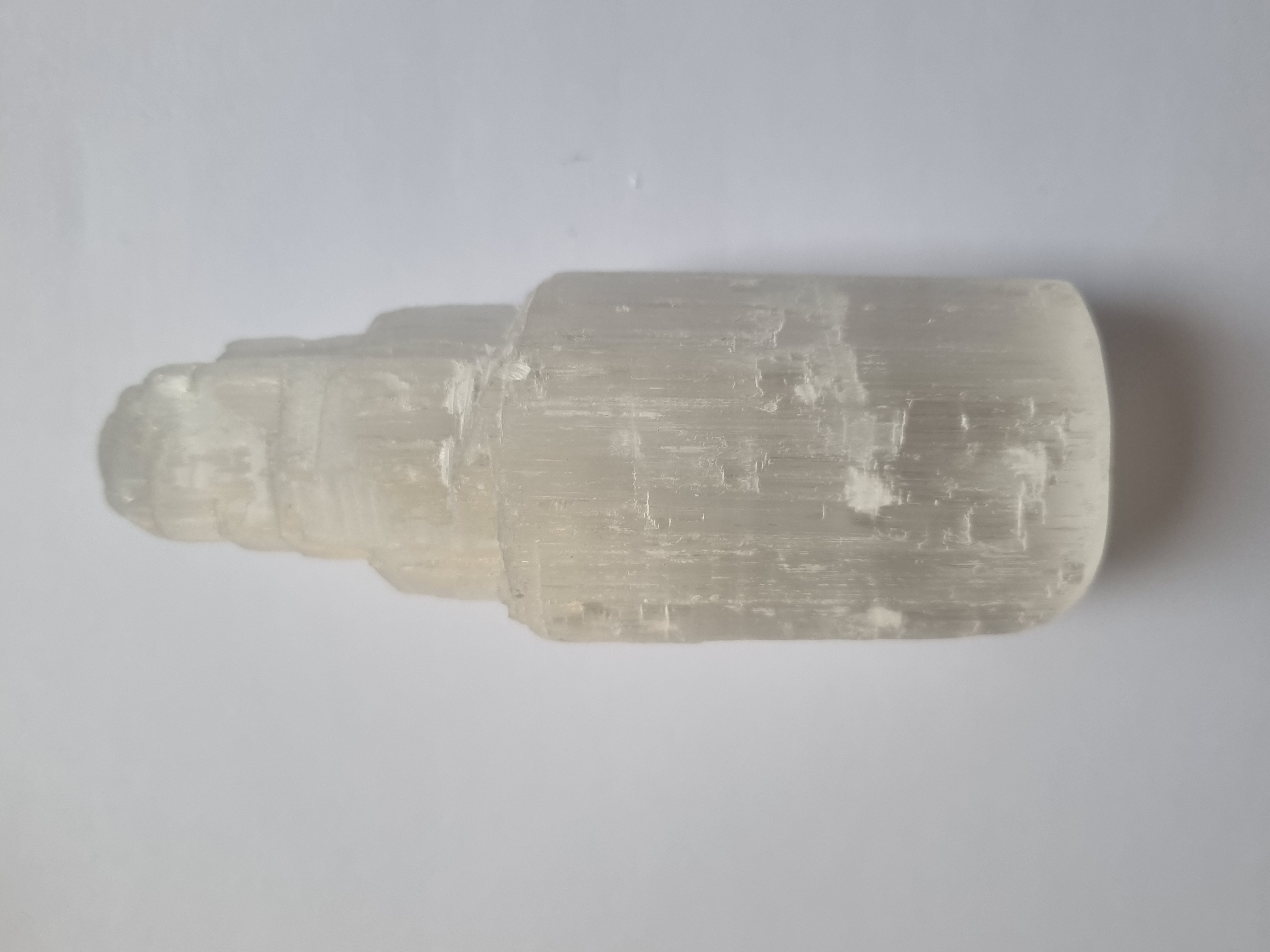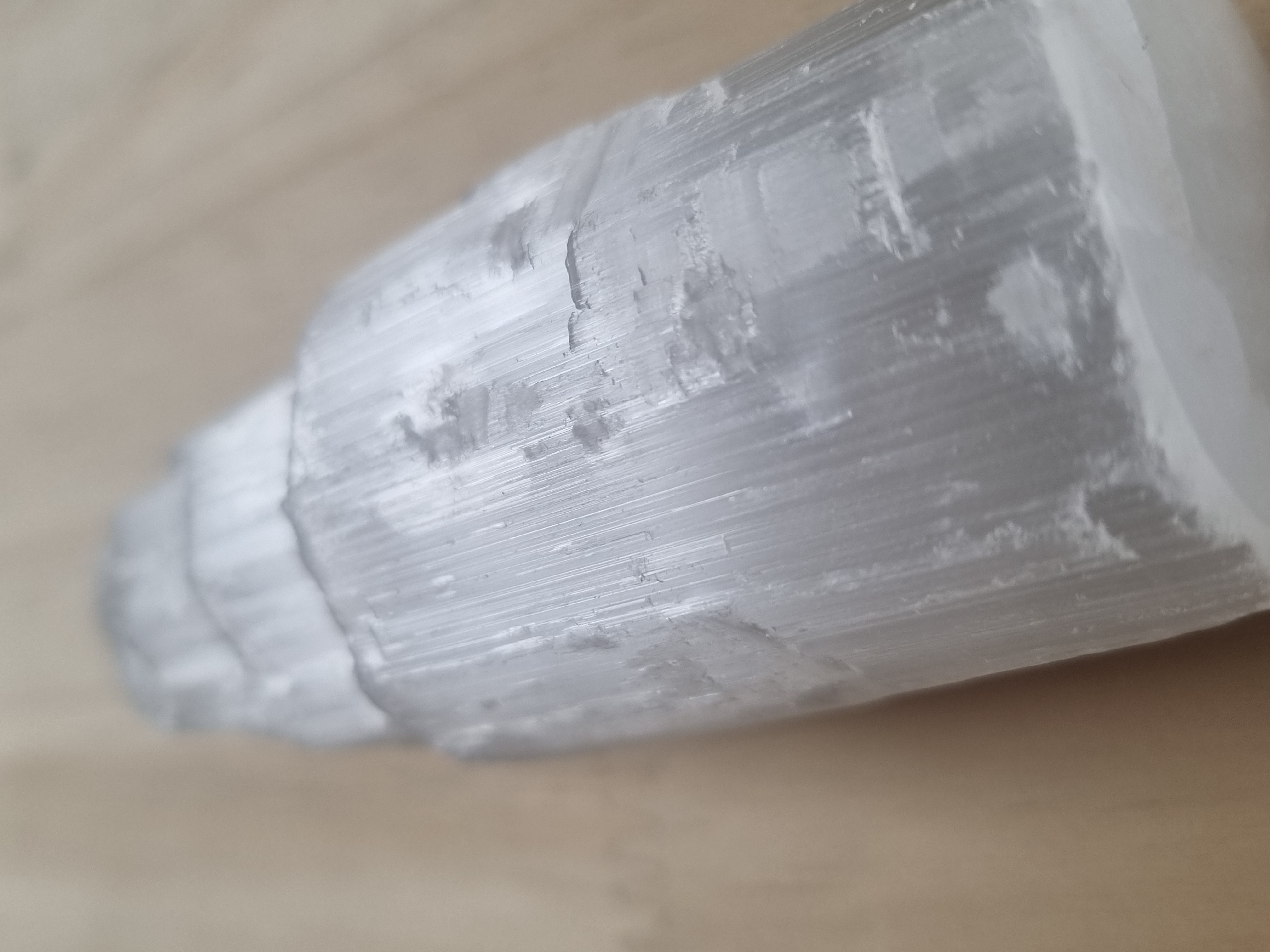Selenite
Known for its translucent appearance and elegant, fibrous texture, selenite is a variety of gypsum, a mineral commonly found in evaporite deposits.
Physical Properties
Selenite’s defining characteristic is its ability to shimmer and reflect light in a way that seems almost ethereal. It is often clear or translucent, with a pearly to glassy luster. The crystal is typically formed in long, flattened blades or columns, and when light passes through its structure, it creates a soft, almost glowing effect.
Its name, “selenite,” is derived from the Greek word selene, meaning “moon,” due to its luminous appearance, which is reminiscent of moonlight. This has made selenite a popular material in both ancient and modern cultures, often associated with spiritual and mystical qualities.



Occurrence and Formation
Selenite forms in evaporite environments, where water evaporates and leaves behind mineral-rich deposits. It can be found in a variety of locations around the world, with notable sources in Mexico, the United States, and Morocco. The mineral typically forms as crystals in salt flats, caves, or gypsum-rich soils.
In its natural state, selenite is relatively soft, ranking 2 on the Mohs scale of hardness. This makes it more prone to scratching and damage compared to harder minerals like quartz. However, its delicate and elegant appearance has made it a sought-after material for collectors and artisans alike.
Uses and Symbolism
Selenite has been valued throughout history for its beauty and metaphysical properties. In ancient times, it was used as a decorative material in temples, palaces, and tombs. Its translucent quality was believed to symbolize purity and light, making it a sacred stone in many cultures.
In modern times, selenite is often used in spiritual practices and is thought to possess healing and cleansing properties. Many believe that selenite can help clear negative energy, promote mental clarity, and enhance intuition. As a result, it is frequently used in meditation, energy healing, and as a cleansing tool for other crystals.
Additionally, selenite has been crafted into various forms, such as lamps, candle holders, and sculptures, due to its soft glow when illuminated. The crystal’s aesthetic and soothing appearance make it a popular choice for home decor.
Conclusion
Selenite is a stunning example of nature’s ability to create beautiful, otherworldly forms. Whether admired for its physical beauty, its symbolism, or its metaphysical qualities, selenite continues to captivate people around the globe. Its luminous presence serves as a reminder of the delicate balance between light and shadow, making it a cherished mineral in both ancient and contemporary cultures.